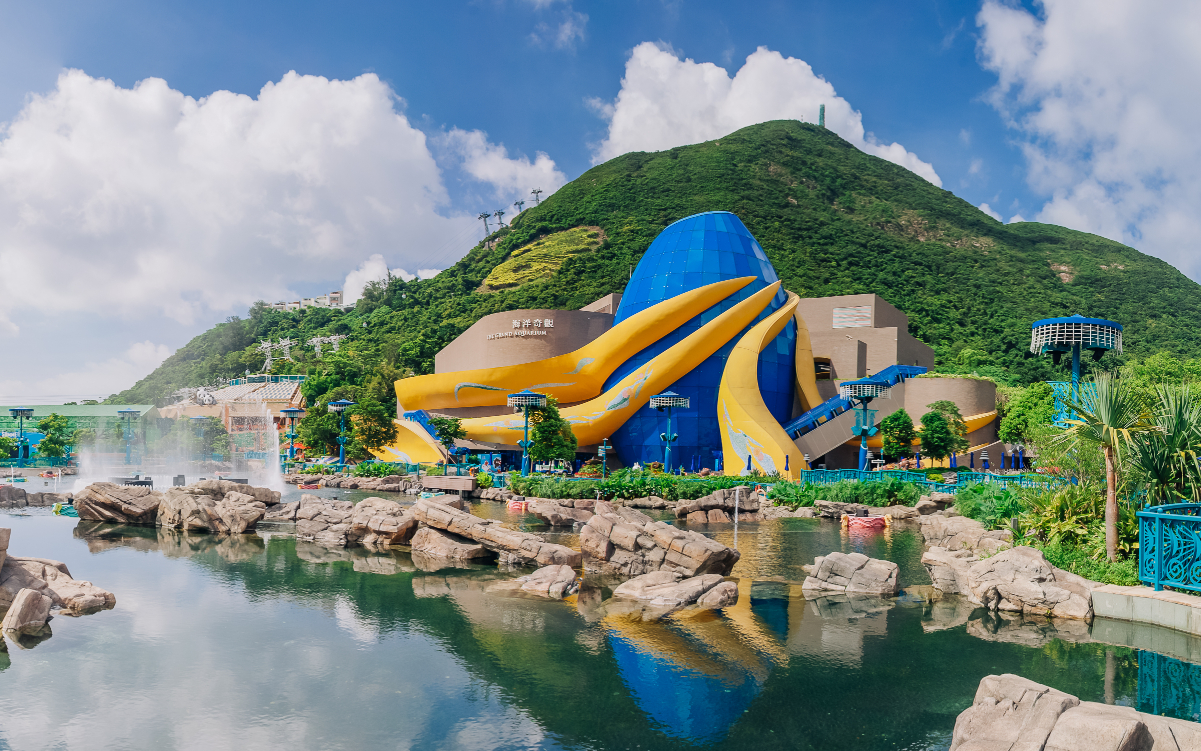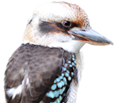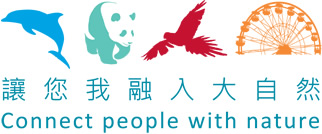Ocean Park is excited to welcome three new members to its family of animal ambassadors – a male golden monkey Qi Qi from Sichuan, as well as the birth of two new animal ambassadors, including a two-toed sloth and an Indo-Pacific bottle-nose dolphin. Ocean Park also confirmed that red panda Rou Rou has experienced a pseudo-pregnancy, a phenomena not uncommon in both species of panda.
After a post-arrival quarantine period, male golden monkey Qi Qi was relocated from the quarantine facility to the Hong Kong Jockey Club Sichuan Treasures (HKJCST) in mid-August to join two female golden monkeys, Le Le and Hu Hu, who have been living at HKJCST since January 2012. Le Le and Hu Hu, aged 6 and 5 respectively, have reached breeding age and the arrival of the five-year-old Qi Qi marked the start of a four-year collaboration with the Cheng Du Zoo to breed this endangered species.
Mr. Howard Chuk, Senior Curator of Terrestrial Life Sciences, said, “We are grateful to the Chengdu Zoo for entrusting us with Qi Qi and honoured to have the opportunity to help contribute to the conservation of golden monkeys. The need for breeding endangered species in zoological settings is expanding throughout accredited zoos for species that are threatened or at risk of extinction in the wild. According to the International Union for the Conservation of Nature (IUCN) Red list of threatened species, almost 25% of mammals, 12% of birds, and 30% of amphibians are threatened with extinction. The need for breeding of endangered species such as the golden monkey will undoubtedly increase as human population growth continues to impact wildlife and their habitats. The first goal of most breeding programs is to develop a self-sustaining population that is genetically diverse and healthy. Breeding programs in zoos and aquariums have considerable educational value because they inform visitors and the public at large of the value of conserving biodiversity and help increase public interest in conservation issues. Animals maintained for these breeding efforts also support a variety of research that advances conservation objectives.”
Ocean Park also announced that a pair of Southern two-toed sloths, named Sal and Ying Muk, gave birth to a baby at the Rainforest exhibit in early June. Two-toed sloths, an arboreal species, give birth year-round, with a typical gestation period of about 10 months. The Park’s animal care and veterinary team have been closely monitoring the animals’ condition since the baby’s birth, and will determined the new-born’s gender later this year when it is older. The baby sloth can be seen moving around with its mother and learning to climb the branch closest to it, a sign of good health and vitality. Guests are welcome to visit this adorable new member of Ocean Park at the Rainforest exhibit and learn about the ecology of two-toed sloths and other rainforest species.
A female dolphin calf, born in July and nicknamed “Halo” by the animal care staff, has also been doing well and she is in good health. Angel, mother of Halo, is enjoying motherhood again and spending all day to take care of Halo. Currently, Halo is still under Angel’s care and being nursed by her; she will be offered fish soon when she turns two months old, but will continue to be nursed by her mother for another three years. Indo-Pacific bottlenose dolphins only breed every four years, spending at least three years nursing their offspring. Halo is slowly exploring her surroundings and meeting her calf-mates, as well as getting herself familiar with the Park’s animal caregivers. The Hong Kong Agriculture, Fisheries and Conservation Department has been notified of the above-mentioned births.
Ocean Park also confirmed that red panda Rou Rou has most likely experienced a “pseudo-pregnancy”, despite showing strong signs earlier in August that were suggestive of a typical red panda pregnancy. This is not an uncommon phenomenon for red pandas, which are known to have unpredictable pregnancy processes.
Aged seven, Rou Rou arrived at Ocean Park from the Chengdu Research Base of Giant Panda Breeding in March 2009. This year, she was first observed mating with Tai Shan in May. Since then, her food intake, body weight and progesterone (hormone) level increased steadily, which were suggestive of a pregnancy. Her caregivers also noticed other stronger signs of pregnancy, such as change in hormonal patterns, a tightened belly and mammary development.
Mr. Chuk said, “As soon as pregnancy was suspected, we immediately consulted experts in Sichuan to gain more insights into the pregnancy markers and prenatal care. Rou Rou was closely monitored via CCTVs located in all nest boxes for close observation throughout her suspected pregnancy.”
Mr. Chuk continued, “Apart from behavioural observation, we also examined Rou Rou’s urine sample regularly to monitor her hormonal levels. However, we discovered that the typical signs of pregnancy that Rou Rou displayed earlier started to diminish after mid-August, and her hormone levels have returned to base line. After a detailed review and discussions with experts from Chengdu Research Base of Giant Panda Breeding, it was confirmed that Rou Rou is unlikely to be pregnant.”
On the other hand, Ocean Park’s young female giant panda Ying Ying has returned to her habitat in Giant Panda Adventure in late August after her visit to Sichuan where she participated in the National Giant Panda Breeding Programme for the first time. Her carers have been monitoring her condition closely ever since her return from Sichuan in late July but no signs of pregnancy have been detected to date. Giant pandas’ gestation period lasts between 72 and 324 days and a true pregnancy can only be confirmed by ultrasound two weeks before birth. Ocean Park remains positive and hopeful that Ying Ying would eventually give birth to Hong Kong’s first giant panda cub, and will continue to update the public on Ying Ying’s latest developments as information becomes available.







